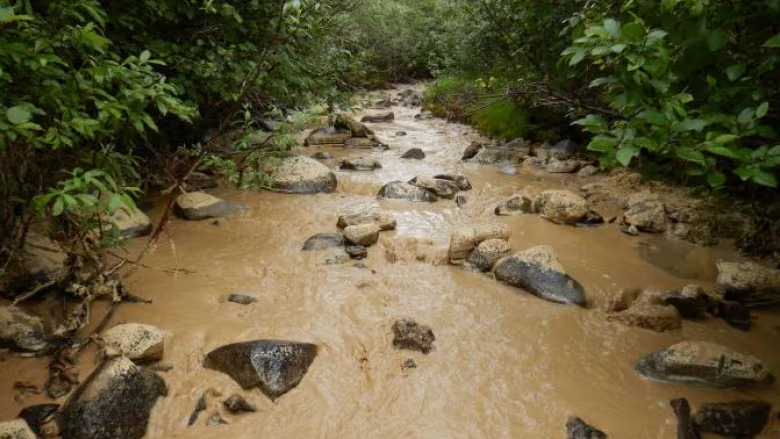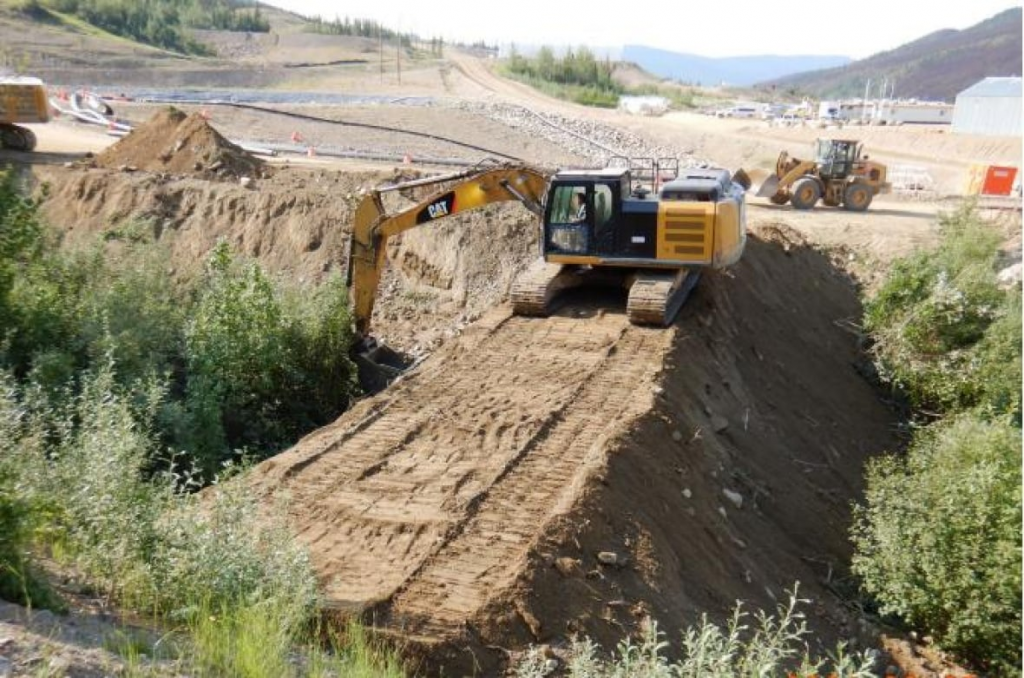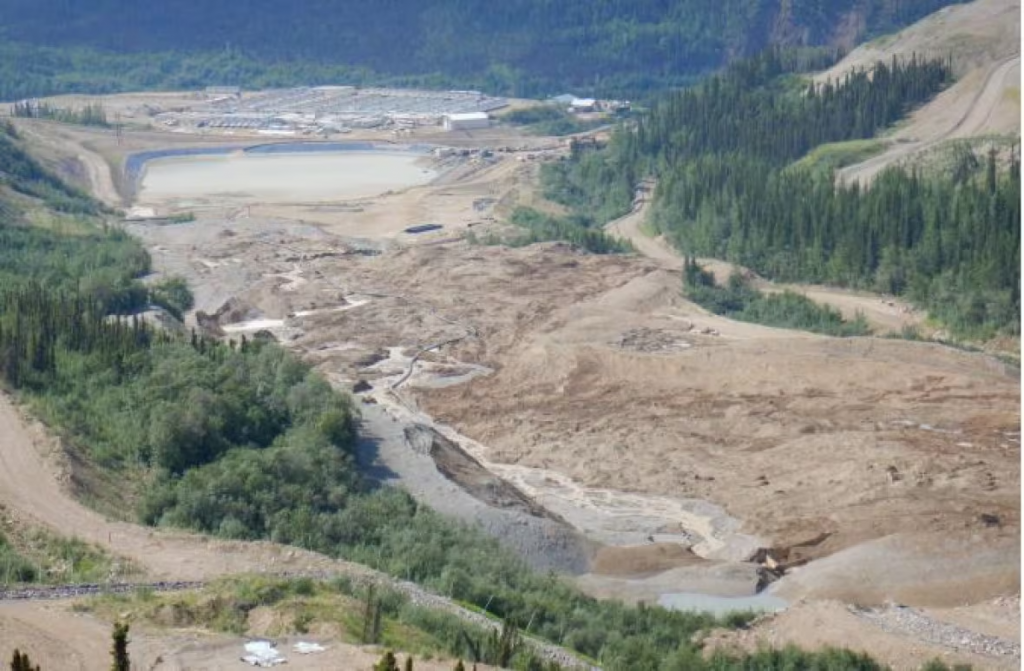Canada News
Documents show ‘disastrous’ cyanide leaks continue at Eagle mine in Yukon

Dublin Gulch is pictured on June 25, 50 kilometres upstream of the upper containment dam. Samples from the area showed arsenic, cadmium, mercury, zinc, aluminum and other contaminants. (Yukon Government)
Yukon government inspection reports released to the public this week reveal the scale of what transpired at the Eagle mine site near Mayo — and what’s being done by Victoria Gold to address it.
An inspection report dated July 20 describes a series of failures by Victoria Gold to adequately address cyanide solution leaks.
The company’s post-failure water treatment plan “does not sufficiently describe” plans to store and treat daily leaks of 15,000 to 20,000 cubic metres of toxic solution — enough liquid to fill up to eight Olympic swimming pools.
Experts believe there could be hundreds of millions of litres in the heap, which typically takes about 45 to 90 days to cycle through ore.
In an apparent attempt to increase storage capacity at the mine site, Victoria Gold workers excavated a dirt pit to fill with contaminated solution. But that pit was “significantly less” than what the company was directed to build, and did not include a liner, meaning any contaminated water stored there could enter groundwater.
An earlier inspection report collected on June 25, one day after the heap leach facility failure, was released on July 19.

That report reveals water samples collected from Dublin Gulch immediately following the heap leach failure showed elevated levels of heavy metals such as arsenic, cadmium, mercury, zinc and aluminum along with other contaminants.
Inspectors also found several dead Arctic grayling fish in Dublin Gulch. It’s unclear if the fish died as a result of toxins or low water levels. Tissue samples were sent to federal authorities for further testing.
When CBC asked about the results, an Environment and Climate Change Canada spokesperson said that information will not be shared with the public “to protect the integrity of enforcement and judicial processes.”
Cost of clean-up expected to spiral
Randi Newton, conservation manager at the Yukon chapter of the Canadian Parks and Wilderness Society, said these new documents have made it clearer than ever that it’s time for regulators to step in.
“[Victoria Gold] has failed in many major respects,” Newton said, noting the company has a history of not meeting regulatory requirements. “The scale of this disaster continues to increase every day.”
Newton said the government has demonstrated a pattern of failing to hold the industry accountable.
“We speak of our strict regulatory system, but this heap leach failure, like Wolverine, like Minto, continues to expose the gaps and limitations of our current system,” she said.

While the Yukon government has secured approximately $104 million in financial security from Victoria Gold for the purpose of mine reclamation, Newton believes it’s unlikely that will cover the full cost of dealing with the heap leach failure.
“Unfortunately, that amount was calculated on a very responsible closure. It didn’t account for the heap leach failing. I don’t see any scenario where this cleanup cost is not going to be more than 104 million.”
Matt Lindsay is a professor at the University of Saskatchewan specializing in mine closure and groundwater geochemistry. While he was unable to guess what the exact costs of addressing the heap leach failure might look like, he said the longer mine clean-up takes, the higher the price tag.
“That’s where you get into very quickly escalating costs,” he said. “As it gets into soils and groundwater, the harder and harder it becomes to clean it up. And that’s where your costs are going to just increase exponentially.”
In a conversation with CBC on July 9, Lindsay said “every effort” should be made to prevent contaminants from entering groundwater.
“Remediation at Faro and other highly contaminated sites is complicated by the fact these contaminants have already entered the groundwater system.”
Government should ‘act as if there was a wildfire’
Na-Cho Nyäk Dun First Nation council declared an environmental emergency on July 14. Newton believes the territorial government should do the same to try and intercept as much groundwater contamination as possible before it reaches the surrounding watershed.
“This is an emergency,” said Newton. “We need to make sure this is getting the co-ordination and response it needs, just as if there was a wildfire.”
In a press release issued on July 23, Minister of Energy, Mines and Resources John Streicker claimed the government is doing just that.
“We are treating this as an emergency response, recognizing the potential impacts to people and the environment,” Streicker said. “As a regulator, we are also trying to be flexible to adapt to a quickly changing situation.”
On July 20, the government informed Victoria Gold it has until Thursday to take action against the leaks.
Victoria Gold did not return a request for comment from CBC.
This article is republished from RCI.

